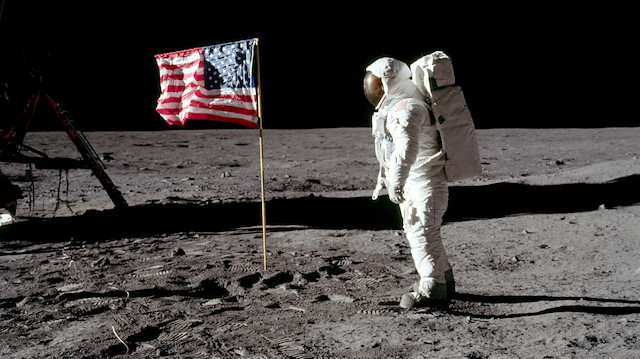
July 20 marks a giant leap for mankind -- of stellar proportions -- when a man made history by stepping on the dusty surface of the Moon a half-century ago.
American astronaut Neil Armstrong became the first person ever to walk among the lunar craters in 1969, just slightly over eight years since Soviet cosmonaut Yuri Gagarin became the first person to fly in space on April 12, 1961.
Among a crew of three, Armstrong, a 38-year-old civilian research pilot, was the commander of the Apollo 11 mission. He led Edwin "Buzz" Aldrin, who piloted the lunar module Eagle, with Michael Collins remaining aboard the lunar orbit Columbia as the command module pilot.
Stepping on the lunar Sea of Tranquility plain, Armstrong famously said: "That's one small step for man, one giant leap for mankind."
Some 19 minutes later, Aldrin followed Armstrong to become the world's second Lunarian.
From the special camera attached to the craft, they recorded and beamed the historic moments back to Earth, as millions watched the walk on their television sets.
The two astronauts explored the surface for two and a half hours, taking photos, collecting rock and soil samples, and putting up an American flag before speaking to then-President Richard Nixon over radiotelephone via Houston.
Talking to the astronauts from the Oval Office, Nixon called it "the most historic telephone call ever made from the White House".
The astronauts also left a plaque on the Moon, reading: "Here men from the planet Earth first set foot on the Moon July 1969, A.D. We came in peace for all mankind."
- The man on the Moon: How did it start?
The adventure of the Apollo 11 mission started when, on May 25, 1961, then-President John F. Kennedy announced the national goal of "landing a man on the moon" before the end of the decade, as the "Space Race" heated up between the U.S. and Soviet Union amid the ongoing Cold War.
The expensive and laborious Apollo program -- involving an international team consisting of around 400,000 engineers, scientists and technical personnel and costing billions of dollars -- was justified by the mandate to beat the U.S.S.R. to the Moon, voiced by Kennedy, who tragically would not live to see this dream come true.
Despite the rush to beat Moscow -- which had been the first to launch a satellite, man and woman into space -- the Apollo 11 mission was the successful result of ceaseless tests and missions conducted by the National Aeronautics and Space Administration (NASA).
Danger was never far away. On Jan. 27, 1967, a flash fire swept through the command module during a manned launch-pad test of the Apollo 1 mission. Three astronauts were killed in the fatal tragedy at Kennedy Space Center at Cape Canaveral, Florida.
In the two years that followed, NASA launched various manned missions into space, including the Apollo 10 mission, which took three astronauts around the moon in a dry run.
Finally, on July 16, 1969, the Apollo 11 mission was launched from Florida, the first "giant leap" in what could become a new age for humankind among the stars.
The crew returned to their home planet on July 24, 1969, falling into the waters off the Hawaiian Archipelago in the Pacific Ocean.
Apollo 17, the last manned moon mission, took place on Dec. 14, 1972, with some arguing that end of the Cold War diminished the impetus for new missions to Earth's only natural satellite.
- Conspiracy theories of 'staged' Moon landing
Despite facts asserting the contrary, some believe Washington "staged" the Moon Landing.
Adherents to the conspiracy theory argue that the Apollo 11 astronauts never really went to the Moon, and that the world instead watched fake scenes that were filmed in a Hollywood studio.
Some call into question the absence of stars in the images of the Lunar sky, while others see the flapping of the American flag as a cause for doubt, stating that the lack of atmosphere on the Moon would have produced no winds.
Still others question Armstrong's first steps in the pale dust, which they say could not have been filmed as there was nobody to operate a camera, or that the shadows visible in the footage suggested there were several light sources in the facility, as if in special studios.














